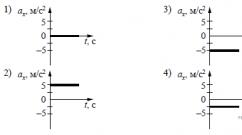Physics of solar flares. Solar flares and magnetic storms
B.V. Somov, Doctor of Physical and Mathematical Sciences,
State Astronomical Institute named after PC. Sternberg, Moscow State University
During a large flare, the flow of hard electromagnetic radiation from the Sun increases many times. In ultraviolet (UV), X-rays and gamma rays invisible to us, our star becomes "brighter than a thousand suns". The radiation reaches the Earth's orbit eight minutes after the start of the flare. After a few tens of minutes, streams of charged particles, accelerated to gigantic energies, arrive, and after two or three days - huge clouds of solar plasma. Fortunately, the ozone layer of the Earth's atmosphere protects us from dangerous radiation, and the geomagnetic field protects us from particles. However, even on Earth, especially in space, solar flares are dangerous and it is necessary to be able to predict them in advance. What is a solar flare, how and why does it occur?
The sun and we
The closest star to us - the Sun - was born about 5 billion years ago. Nuclear reactions take place inside it, thanks to which life exists on Earth. Based on modern observations, theoretical models of the structure and evolution of the Sun leave no doubt that it will shine for billions of years.
Solar radiation is the main source of energy for the earth's atmosphere. Photochemical processes in it are especially sensitive to hard UV radiation, which causes strong ionization. Therefore, when the Earth was young, life existed only in the ocean. Later, about 400 million years ago, the ozone layer appeared, absorbing ionizing research, and life came to land. Since then, the ozone layer has been protecting us from the damaging effects of hard UV radiation.
The magnetic field of the Earth, its magnetosphere prevents the penetration of fast charged particles of the solar wind to the Earth (Earth and Universe, 1974, No. 4; 1999, No. 5). When its gusts interact with the magnetosphere, some of the particles still fall out near the Earth's magnetic poles, giving rise to auroras.
Alas, the harmony of our relationship with the Sun is disturbed by solar flares.
Flares in the sun
In recent decades, several space observatories have been gazing intently at the "angry" Sun with the help of special X-ray and UV telescopes. Now there are four such spacecraft: American "SOHO" (Solar and Heliospheric Observatory - solar heliospheric observatory; Earth and Universe, 2003, No. 3), "TRACE" (Transition Region and Coronal Explorer - researcher of the corona and transition layer), "RHESSI" (Ramaty High Energy Solar Spectroscopic Imager - Ramati solar spectral telescope) and the Russian satellite Coronas-F (Earth and Universe, 2002, No. 6).
The huge interest in solar flares is not accidental. Large flares have a profound effect on near-Earth space. Particle and radiation streams are dangerous to astronauts. In addition, they can damage electronic devices of spacecraft, disrupt their operation.
UV and X-rays from the flare suddenly increase ionization in the upper atmosphere of the Earth, in the ionosphere. This can lead to disruptions in radio communications, malfunctions of radio navigation devices of ships and aircraft, radar systems, and long power supply lines. Particles of high energy, penetrating into the upper atmosphere of the Earth, destroy the ozone layer. The ozone content is decreasing from year to year. Scientific discussion is raised by the question of the probable connection of the solar flare activity with the Earth's climate.
Shock waves and ejections of solar plasma after flares strongly disturb the Earth's magnetosphere and cause magnetic storms (Earth and Universe, 1999, No. 5). It is important that perturbations of the magnetic field on the Earth's surface can affect living organisms, the state of the Earth's biosphere (Earth and Universe, 1974, No. 4; 1981, No. 4), although this effect seems negligible compared to other factors in our daily life.
Forecasting outbreaks
The need to predict solar flares arose long ago, but it is especially acute in connection with manned space flights. For a long time, two approaches to solving this problem have been developed almost independently and with little or no result. They can be conventionally called synoptic and causal (causal). The first, similar to weather predictions, was based on the study of the morphological features of preflare situations on the Sun. The second method implies knowledge of the physical mechanism of the flare and, accordingly, the recognition of the preflare situation by modeling it.
Before the start of space exploration, for many years, the observations of flares were carried out mainly in the optical range of electromagnetic radiation: in the Hα hydrogen line and in "white light" (continuous spectrum of visible radiation). Observations in magnetically sensitive lines made it possible to establish a close relationship between flares and magnetic fields on the solar surface (photosphere). The flare is often seen as an increase in the brightness of the chromosphere (the layer immediately above the photosphere) in the form of two glowing ribbons located in areas of magnetic fields of opposite polarity. Radio observations confirmed this pattern, which is of fundamental importance for explaining the flare mechanism. However, his understanding remained at a purely empirical level, and theoretical models (even the most plausible ones) seemed completely unconvincing (Earth and Universe, 1974, no. 4).

Rice. 1 - Solar flare (X-ray score X5.7) recorded on July 14, 2000 from the TRACE and Yohkoh satellites. An arcade of flare loops is visible: on the left in UV (195 A); in the center - in soft X-ray radiation; on the right - sources of hard X-ray radiation (53 - 94 keV), located along the flare ribbons - the base of the arcade. NL - photospheric neutral line.
Already the first extra-atmospheric spacecraft observations showed that solar flares are coronal rather than chromospheric phenomena. Modern multiwavelength observations of the Sun from space and ground-based observatories indicate that the flare energy source is located above the arcade of flare loops (light stripes in the figure on the left) in the corona, observed in soft X-ray and UV radiation. The arcades are based on chromospheric flare ribbons, which are located on opposite sides of the polarity line of the photospheric magnetic field, or the photospheric neutral line.
Flash energy
A solar flare is the most powerful of all manifestations of solar activity. The energy of a large flare reaches (1-3) x10 32 erg, which is approximately a hundred times higher than the thermal energy that could be obtained by burning all the proven reserves of oil and coal on Earth. This gigantic energy is released on the Sun in a few minutes and corresponds to the average (during the flare) power of 10 29 erg / s. However, this is less than hundredths of a percent of the total solar radiation power in the optical range, equal to 4x10 33 erg / s. It is called the solar constant. Therefore, with a flare, there is no noticeable increase in the luminosity of the Sun. Only the largest of them can be seen in continuous optical radiation.
Where and how does the solar flare get its enormous energy?
The source of energy for the flare is the magnetic field in the atmosphere of the Sun. It determines the morphology and energetics of the active region where the outbreak will occur. Here the field energy is much greater than the thermal and kinetic energy of the plasma. During a flash, there is a rapid conversion of excess field energy into particle energy and plasma changes. The physical process that ensures this transformation is called magnetic reconnection.
What is reconnection?
Consider the simplest example that demonstrates the phenomenon of magnetic reconnection. Let two parallel conductors be spaced 2l apart. An electric current flows through each of the conductors. The magnetic field of these currents consists of three different magnetic fluxes. Two of them - Ф 1 and Ф 2 - belong to the upper and lower currents, respectively; each stream covers its own conductor. They are located inside the separatrix line of the А 1 А 2 field (separatrix), which forms a figure eight with the intersection point X. The third stream is located outside the separatrix line. It belongs to both conductors at the same time.
If we displace both conductors in the direction towards each other by the value dl, then the magnetic fluxes will be redistributed. The own fluxes of each of the currents will decrease by dF, and their total flux will increase by the same amount (combined flux F 1 "and F 2"). This process is called magnetic field line reconnection, or simply magnetic reconnection. It is carried out as follows. Two field lines approach point X from above and below, merge with it, forming a new separatrix, and then connect so as to form a new field line that covers both currents.

Rice. 2 - The magnetic field of two parallel electric currents of the same magnitude I:
a) at the initial moment of time; А 1 А 2 - separatrix; F 1 F 2 - magnetic flux before reconnection;
A3 - field line of the total magnetic flux of two currents;
b) after the displacement of the conductors at a distance dl to each other. А 1 А 2 - new separatrix; F 1 F 2 - reconnected magnetic flux. He became a common flow of two currents; line X runs perpendicular to the plane of the drawing;
c) magnetic reconnection in plasma. Shown is an intermediate (preflare) state with a non-reconnecting (slowly reconnecting) current sheet CL.
Note that such a reconnection in vacuum, for all its simplicity, is a real physical process. It can be easily reproduced in the laboratory. Reconnection of the magnetic flux induces an electric field, the value of which can be estimated by dividing the value of dF by the characteristic time of the reconnection process dt, that is, the time of movement of the conductors. This field will accelerate a charged particle placed near the point X, more precisely, the line X.
The plasma of the solar corona differs from the vacuum in its very high electrical conductivity. As soon as an electric field E induced by the reconnection appears, it immediately generates an electric current directed along the line X. It takes the form of a current sheet, which prevents the reconnection process. In a highly conductive plasma, the current sheet makes the reconnection between interacting magnetic fluxes very slow. This leads to the fact that a significant part of the interaction energy is accumulated in the form of an excess of magnetic energy, namely, the magnetic energy of the current sheet.
Current layers and flares
In the general case, the reconnecting current sheet is a magneto-plasma structure, at least two-dimensional and, as a rule, two-scale, since the plasma flows into and out of the layer in orthogonal directions. Usually (especially under conditions of a strong magnetic field) the width of the layer (2b) is much greater than its thickness (2a). This is important because the wider the current sheet, the more energy it can accumulate in the region of interaction of magnetic fluxes. Meanwhile, the thicker the layer, the greater the rate of dissipation (loss) of the accumulated energy. These fundamental properties of the reconnecting current sheet form the basis of the solar flare model proposed by the outstanding Russian astrophysicist S.I. Syrovatsky (1925-1979).

Rice. 3 - The simplest model of a reconnecting current sheet is a neutral layer.
2c - layer width; 2а - layer thickness; the arrows show the directions of plasma inflow into and out of the layer.
In real three dimensions, only in recent decades, thanks to space studies of the Sun, the role of the topological properties of large-scale magnetic fields and kinetic plasma phenomena involved in the reconnection process in flares has become clear.
"Rainbow" and "lightning" in the Sun
Initially, the interaction of magnetic fluxes in the solar atmosphere was considered solely as a result of the emergence of a new magnetic field from under the photosphere into the corona. The new magnetic flux, rising in the solar atmosphere, interacts with the old, preceding magnetic flux. In fact, the interaction of magnetic fluxes in the sun's atmosphere is a much more general phenomenon. In 1985, the author of the article proposed a model that connects vortex plasma flows in the photosphere with the appearance of special magnetic field lines in the corona - separators. The separator appears over the S-bend of the photospheric neutral line, like a rainbow over the bend of a river. Such bends are quite typical for magnetograms of large flares.

Rice. 4 - Model of the magnetic field of the active region before the flare. A special magnetic field line - the separator (X) above the S-shaped bend of the photospheric neutral line (NL) is like a rainbow over a river. A vortex flow with a velocity V in the photosphere deforms the photospheric neutral line so that it takes the shape of the letter S. V_ - convergent photospheric currents (directed towards the neutral line); V || - Shear photospheric currents (directed along the neutral line). The structure of the field in the vicinity of the separator, near its apex is shown in the upper right corner: B_ - transverse components of the field (perpendicular to the separator), B || - longitudinal component of the field (directed along the separator).
By the structure of the field, the separator differs from the line X only in that it contains the longitudinal component of the magnetic field. The presence of the longitudinal field B ||, of course, does not prohibit the reconnection process. This component is always present inside and outside the reconnecting current sheet that forms along the separator. It affects the rate of reconnection of the transverse components of the field B_ and, consequently, the power of the process of converting the field energy into the thermal and kinetic energy of particles. This makes it possible to better understand and more accurately explain the features of energy release in a solar flare.
Flash is a rapid magnetic reconnection that is like a giant lightning bolt along a "rainbow" separator. It is associated with a strong electric field (more than 10-30 V / cm) in a high-temperature (more than 10 8 K) turbulent current sheet (VTTTS) carrying a huge electric current (about 10 11 A).
Primary energy release
The picture of the flash in all its diversity and beauty (see page 1 of the cover) is a consequence of the primary release of energy in VTTTS. The presence of several channels of energy release in the current sheet (plasma flows, thermal and electromagnetic radiation, accelerated particles) determines the variety of physical processes caused by a flare in the solar atmosphere.

Rice. 5 - Flares on April 15, 2002. The images were obtained by the X-ray telescope onboard the RHESSI satellite in the energy range of 10-25 keV, which corresponds to the thermal radiation of a superhot plasma:
a) immediately before the impulse phase;
b) during a pulse increase in the flux of hard X-ray radiation;
c) at the maximum intensity; an upward moving source corresponds to the onset of a coronal mass ejection (CME).
Reconnected magnetic field lines together with "superhot" (electron temperature more than 3x10 7 K) plasma and accelerated particles move from VTTTS with velocities of the order of 10 3 km / s. The X-ray telescope of the RHESSI space observatory recorded two sources of hard X-rays in the corona during the flare on April 15, 2002. One of them was located high above the solar limb. Its upward movement corresponded to the inception of a coronal mass ejection into interplanetary space. This ejection was registered by the coronagraph onboard the SOHO spacecraft on April 16, 2002 (Earth and Universe, 2003, No. 3). The second hard X-ray source was located under the separator. The spatial distribution of the hard X-ray radiation energy and, accordingly, the spatial distribution of the highest temperatures in the flare are consistent with the assumption that there is indeed a reconnecting VTTTS between the sources.
"Secondary" effects under the rainbow
As it gradually cools, the superhot plasma becomes visible in softer X-rays. In the region located under the separator, it moves downward and meets with another "hot" (electron temperature less than or on the order of 3x10 7 K) plasma, which rapidly flows upward from the chromosphere to the corona.
The reason for this secondary (but not secondary) flow is that powerful fluxes of heat and accelerated particles from VTTTS rapidly propagate along reconnected magnetic field lines and instantly heat the chromosphere on both sides of the photospheric neutral line. This is how pairs of flare ribbons are formed, which are observed in the visible chromospheric lines and UV lines of the transition layer between the corona and the chromosphere. The upper layers of the chromosphere heated to high temperatures "evaporate" into the corona. The effect of rapid expansion of heated chromospheric plasma into the corona is clearly visible in X-rays. "Chromospheric evaporation" (as this phenomenon is called), together with the plasma escaping from the current sheet, gives rise to arcades of flare loops: long or short (as in the flare of April 15, 2002).

Rice. 6 - Giant solar flash (X-ray score X17) November 4, 2003 The arcade of flare loops in the corona is perfectly visible. An image in the lines of extreme ultraviolet radiation of 171 A was obtained with the help of the TRACE UV telescope.
As already noted, soft X-ray and UV radiation contains a significant part of the total flash energy, and it is they that affect the upper layers of the Earth's atmosphere. It is not surprising that huge fluxes of the same radiation affect the Sun's atmosphere (Earth and Universe, 1978, No. 1): the chromosphere and photosphere, causing heating and additional ionization of the solar plasma. Unfortunately, the accuracy of modern observations is still not enough to study such subtle effects.
The study of secondary phenomena is of fundamental importance for comparing the results of the theory of flares with observations, since it is the consequences of the primary energy release that are most visible: for example, the bremsstrahlung of accelerated electrons in the chromosphere makes the flare ribbons visible in hard X-rays.
The optical radiation of the flare is part of the complex hydrodynamic response of the chromosphere and photosphere to pulsed heating by powerful beams of charged particles, streams of heat and hard electromagnetic radiation. Unfortunately, there are still no unambiguous theoretical predictions related to optical radiation. The physical picture of the "response" is too complex. Progress has been achieved only on the path of numerical simulation of pulsed heating of the chromosphere by electron beams. Computer calculations revealed the specific features of the impulse phase of the flare: the formation of shock and heat waves of large amplitude, the difference between the electron temperature and the ion temperature, and powerful UV radiation in the lines of the transition layer. However, in general, even within the framework of such a limited formulation of the response problem, there is still much to be done to ensure a comparison of the results of calculations and observations.

Rice. 7 - The outburst recorded on July 23, 2003. Positively and negatively charged particles of different energies fall out from the current sheet into the chromosphere in different regions. The image was obtained as a result of overlapping images taken by "TRACE" and "RHESSI" satellites. The distribution of the green background was given by UV observations from the TRACE satellite 90 m after the flare; postflare loops in the crown are visible (black).
The first spatial observations of gamma-ray flares at the RHESSI space observatory showed that accelerated electrons and accelerated ions invade the chromosphere in different regions. This new observational fact, although it requires further detailed study, is in general agreement with the assumption of the primary acceleration of particles by an electric field in a reconnecting VTTTS. Positively and negatively charged particles are accelerated by a large-scale electric field in opposite directions and, accordingly, spill out from the current sheet into the chromosphere along various lines of the magnetic field. Unfortunately, accurate theoretical calculations of the effect are still lacking.
Before flash
What precedes the outbreak? At what point in time does it occur? Let us consider these issues using the example of the "Rainbow" model developed in the Department of Solar Physics of the SAI MSU.
Let's start with the pre-flash energy storage process. The main factors here are the slow currents of photospheric plasma carrying magnetic fields. Photospheric currents directed to the neutral line are usually called convergent, and currents along it are called shear currents.
Obviously, convergent flows tend to compress the photospheric plasma and the magnetic field “frozen” into it (moving with the plasma) in the vicinity of the neutral line. This leads to the formation of a slowly reconnecting current sheet along the separator. In this case, the magnetic field acquires an excess of the magnetic energy of the current sheet. Shear flows in the photosphere stretch the magnetic field lines in the corona in a direction parallel to the separator.
The total excess of magnetic energy in the corona, created by plasma currents in the photosphere, is called "free magnetic energy". It is she who is fully or partially "released" during a flash, more precisely, it is converted from the energy of the field into the thermal and kinetic energy of particles of the solar plasma.
How does the outbreak happen
In the "Rainbow" model, it is assumed that the process of fast reconnection, that is, the primary energy release in a flare, begins at the separator near its apex.
Reconnecting the first pair of field lines creates a new line. In this case, there is a rapid transformation of the corresponding portion of the magnetic field energy into the energy of plasma particles. Accelerated particles in a very short time fly along the reconnected field line to its bases in the chromosphere. Here they give up their energy: they slow down and heat up the chromospheric plasma, giving rise to a pair of "bright points" called "flare emission nuclei".

Rice. 8 - This is what the magnetic field looks like before the flash:
a) magnetic lines f 1 and f 1 "are closest to the current sheet (RCL).
They reconnect first at the start of the outbreak.
b) during a flash at the moment of rapid reconnection of the magnetic field.
f 2 and f 2 "- new reconnected magnetic lines.
P a and P b are flare emission nuclei. Their apparent displacement is shown by green arrows.
Rapid reconnection of the next pair of magnetic field lines creates another field line and a new pair of bright dots. And to an observer on Earth or on a space station, it seems that both flare cores are moving towards each other.
In reality, the flare in the reconnection process involves, of course, not two field lines, but two magnetic fluxes, which interact not at one point, but along the entire separator. Therefore, reconnection gives rise not to two bright points in the chromosphere, but to two flare ribbons.
The "Rainbow" model explains the presence of two effects in the observed flash pattern. First, the flare ribbons during a flare should move in opposite directions from the photospheric neutral line. Second, the brightest parts of the flare ribbons can move towards each other if the magnetic energy accumulated due to shear flows of the photospheric plasma parallel to the neutral line is released.
Of course, real solar flares are not as symmetrical as simplified model structures. In active regions on the Sun, one polarity of the magnetic field in the photosphere, as a rule, dominates over the other. Nevertheless, the Rainbow model is a good basis for comparing flare reconnection theory with modern multiwavelength observations.

Rice. 9 - Flash (X-ray score X5.7) July 14, 2000 Shows the position of the brightest radiation source, K1, in the range 53-93 keV, according to the hard X-ray telescope HXT on the Yohkoh satellite at the beginning (yellow outlines) and in end (blue outlines) of a hard X-ray burst. The green arrow is the displacement of the radiation centroid C, during the burst of the order of 20 s. The red arrow shows the movement of the largest sunspot P1 during the two days preceding the flare. It consists of two parts: movement to the simplified neutral line SNL and movement along it.
During a flare, there is a rapid "stress relaxation" of the magnetic field in the corona. Just as the trigger releases a compressed spring, reconnection during a flash ensures the rapid conversion of the excess field energy accumulated in the active region on the Sun into thermal and kinetic energy of particles.
Prospects for studying flares
The study of solar flares is necessary to create a scientifically grounded, reliable forecast of the radiation situation in near space. This is the practical task of the theory of flares. However, something else is also important. Solar flares need to be studied to understand various flare phenomena in cosmic plasma. Unlike flares on other stars, as well as many other similar (or seemingly similar) non-stationary phenomena in the Universe, solar flares are available for the most comprehensive study in almost the entire electromagnetic range - from kilometer radio waves to hard gamma rays. The physics of solar flares is a kind of cut through many areas of modern physics: from the kinetic theory of plasma to the physics of high-energy particles.
Modern space observations make it possible to see the appearance and development of a solar flare in UV and X-rays with a high spatial, temporal and spectral resolution. A huge stream of observational data on flares and the phenomena they cause in the Sun's atmosphere, interplanetary space, magnetosphere and Earth's atmosphere makes it possible to thoroughly check all the results of theoretical and laboratory simulations of flares.
Solar flares are unique in their strength and power of release of thermal, kinetic and light energy in the sun's atmosphere. The duration of solar flares does not exceed only a few minutes, but the colossal amount of emitted energy has a direct impact on the Earth and on you and me.
Consequences of solar flares
These processes in the sun are powerful explosions that form in the vicinity of large sunspot groups. The energy index of one outburst is approximately ten times the energy of one volcano. In this case, the sun throws out a special substance from its surface, which consists of charged particles. It has supersonic speed and, moving in interplanetary space, creates a shock wave, which, when it collides with our planet, causes magnetic storms.
The body of each of us reacts differently to solar flares. Many people "feel" them almost immediately, experiencing malaise, severe headaches, problems in the work of the cardiovascular system, as well as a violation of the psycho-emotional background: irritability, increased sensitivity and nervousness. The second group of people have the so-called "delayed reaction": they react to solar flares 2-3 days after their occurrence.
Solar flares are bursts of energy in the sun's atmosphere to which people respond in different ways.
Sick and weakened people suffering from surges in blood pressure react most sharply to flares in the sun. It is known that on the days of solar activity, the number of accidents and disasters caused by the human factor increases. The fact is that flares in the sun reduce a person's attention and dull his brain activity.
How to predict solar flares and are they harmful to humans?
The intensity of solar activity has a 28-day cycle, this figure is related to the rotation of the "hot star" around its axis. During this period, the most complex interconnection of cycles of higher and lower order takes place. With this fact, scientists explain the fact that solar flares, and as a result - magnetic storms, most often occur in March and April, as well as in September and October.
Solar activity affects the mental capacity of people. When the sun is calm, then creative people experience uplift and inspiration, and when the luminary produces flashes, people's attention is dulled, and they are in a depressed state, close to depression.
The researchers discovered an interesting fact - it turns out that earthquakes, hurricanes and typhoons are formed just at the time of solar flares. Therefore, in most cases, scientists predict these natural disasters, based on their periodicity of solar flares.What are the effects of solar flares on humans?
As a result of solar flares, the following reaction to the activity of the star is observed on Earth:
- - infrasound, which occurs at high latitudes, in the areas of the northern lights;
- - micro-pulsations of our planet, which are short-period changes in the Earth's magnetic field, it is they that negatively affect the work of the human body;
- - as a result of solar flares, the intensity of ultraviolet radiation arriving at the surface of our planet changes.
As a result of such reactions of nature to solar flares, the biorhythms of not only humans, but also all life on Earth, change.
At present, many research institutes, observatories and laboratories are engaged in the study of the effect of solar flares on the human body and our planet as a whole. Perhaps a detailed study of the behavior of the sun will help us to turn its "surprises" for our own good.
Astrologers claim that the two main luminaries, the Moon and the Sun, not only illuminate and warm our earth, but also have a direct impact on the inhabitants of the entire planet.
This article is for people over 18 years of age.
Have you already turned 18?
How the Sun affects a person: the secrets of astrology
The sun is both a friend and an enemy to all of humanity. If you deal with the Sun correctly, then it will greatly help you to strengthen your health, cheer you up, and charge you with positive energy. The sun and the moon have a huge impact not only on the earth, but also on humanity and other living microorganisms.
The role of heavenly bodies in our daily life should not be underestimated, because they are of great importance. For example, the phase of the moon can determine our well-being, success, the results of the working day. Astrologers distinguish several phases into which the moon enters: full moon, new moon, waning moon and waxing. Each period gives people certain inconveniences or joys.
What is influenced by the position of the Moon and the Sun, you may ask? It's easier to say what these huge and such important celestial bodies do not affect. They can change your health, how you feel, and set the tone for your day. Astrologers determine in what periods it is better to start a new job, do operations, cut hair, pick mushrooms, fish, and so on. And all this directly depends on the Moon and the Sun. Also, these celestial bodies have a huge impact on the climate of our planet. The position of the sun affects not only the time of day, but also the weather.

Even in ancient times, people realized that the sun's rays can be an excellent medicine for various ailments. So, some patients and those whose body was very weakened were prescribed walks, sunbathing. This kind of therapy had a positive effect on the human body. The sun's rays, which contain ultraviolet light, promote the production of vitamin D in the human body, and the vitamin, in turn, strengthens the human skeletal system. But any medicine becomes harmful if used excessively. Probably, even babies know that the sun can affect the skin both negatively and beneficially. This is not a joke: everyone can burn skin in a matter of minutes, but burns have very unfavorable consequences. Therefore, every self-respecting person tries to protect himself from the scorching sun rays.
Frequent and thoughtless exposure to the sun contributes to the fact that the skin ages faster, fine wrinkles appear and even the risk of dangerous diseases. It is not recommended to sunbathe in the Sun during rush hour (from 11 am to noon). Although at each time of the year, in different countries this period may be indicated by different numbers. Try not to go without protective clothing when the sun is baking, do not forget about hats and quality sunglasses. UV rays have tremendous power, so it is better to use it only for good. Take care of yourself, do not abuse the sun's rays, even if they only heal you, but in no case harm you.

How do solar flares affect humans?
Solar flares are one of the natural phenomena that scientists have been interested in for many years. This phenomenon has a strong enough effect on the earth, therefore, it is of great interest. Scientists have come to the conclusion that the sun's activity consists of eleven cycles, and it is very difficult to predict the next flash. Analysis of solar magnetic fields has shown that these phenomena are quite unstable, they are not constant.
No one doubts that the sun affects the weather. There is no need to explain that if it is a sunny day in summer, then it will be not only warm, but also hot, and at the moments when the Sun is hidden behind clouds, you need to take warmer clothes. We also know that in winter the Sun can shine, but not warm, because it is very far from the earth.
In the same way, solar flares affect our planet and us. They are very dangerous for astronauts, because at the moment of their action it rises significantly, and if a person is exposed to radiation, this will have dire consequences for him in the future. Although, I must say that solar flares have a huge impact on the health and well-being of ordinary people, which have nothing to do with space flights.
Scientists have long tried to find out whether the processes taking place on the Sun affect the peaceful inhabitants of the earth. They were able to prove that this is really so, it even turned out what exactly the outbreaks affect and which groups of people are most at risk.
For example, on days when active processes take place on the Sun, accidents and catastrophes more often occur on the earth, in which it is the person who is guilty. This is due to the fact that during this period people have a very weakened brain activity, dull concentration of attention, it becomes difficult for them to think and think soundly. Solar flares are also known as magnetic storms.

People often say that during this period they do not feel well, complain of headaches. The following groups of people are especially sensitive:
- those with weakened immunity;
- people who have problems with the cardiovascular system, those who suffer from frequent pressure drops, migraines;
- mentally unbalanced;
- those who from time to time suffer from insomnia, loss of appetite, poor sleep;
It was found that various chronic diseases are exacerbated precisely during the period when regular outbreaks occur on the Sun. This has not been scientifically proven, but in practice there have been cases more than once that during magnetic storms old wounds began to hurt again, scars, broken bones or joints worried.
It is recommended that you regularly visit medical specialists to know if you are healthy, and if chronic diseases are found, you should at least try to protect yourself during magnetic storms. It would be possible to prepare in advance for a deterioration in health and always have the necessary medications on hand.
In our century, there is no longer any doubt that the Sun really has an effect on the human body. But this does not mean at all that if one person had a splitting head during magnetic storms, then the same symptoms will accompany everyone else. Not at all, everything here is purely individual, and today you can suffer from solar flares, and your work colleagues will still feel great.

Scientists are not giving up and are still trying to find the most correct way that would make it possible to more accurately predict the next outbreak. This is a rather difficult task, but still there are small successes. Some experts are trying to determine in the smallest detail the behavior of the sun before flares, someone has been studying the physical mechanisms of a solar flare for many years. It may be worth combining both methods (synoptic and casual) to get the most reliable results.
Solar flares can negatively affect children, especially those who are prone to various diseases.
In principle, it is not difficult to explain why magnetic storms so affect the well-being of people. Basically, our body is made of water, and water, as you know, is an excellent conductor. So it turns out that when certain processes occur in the atmosphere, bursts of energy and so on, our body reacts in a certain way.
It is not at all mythical that the sun also affects male sperm. Vitamin D is of great importance in the conception of children. Employees of the University of Copenhagen conducted an interesting study, during which they concluded that sperm cells are more mobile in the stronger sex, who have good levels of vitamin D in their blood. So you need to be more often sunflower rays if you want to continue your race in the near future.
The phenomenon of fish biting is also dependent on the sun. It would seem, how can a heavenly body influence a fish? But experienced fishermen know when fish bite best. For example, you need to catch carp before sunrise.
Since we live on planet Earth, we should be more attentive to the world around us. Do not overestimate or underestimate the role of the sun and moon in our lives. In fact, everything is natural, everything is going as it should, so you just need to listen to those mysteries of nature that humanity has already been able to unravel.
Despite the fact that our star looks calm and constant, it can sometimes explode, releasing a huge amount of energy - astronomers call these events solar flares. Flares occur in the atmosphere of our star, as well as in the corona and chromosphere. Plasma heats up to tens of millions of degrees Kelvin, and particles are accelerated to near the speed of light.
In an instant, 6 x 10 * 25 Joules of energy are released. Space telescopes observe bright emissions of X-ray and ultraviolet radiation during the activity of our star.
Flares on the Sun today and online can be viewed below, information is laid out online from the GOES 15 satellite. Their number and strength changes with the 11-year solar cycle.
The picture is updated automatically
Real-time photography
GOES 15 is a spacecraft with a sophisticated X-ray telescope for monitoring and early detection of solar flares, coronal mass ejections and other phenomena that affect the space weather of the Earth and the surrounding space.
Monitoring
Using the graph below, you can see the strength of solar flares for each day. They are conventionally divided into three classes: C, M, X, the maximum value of the wave of the red line characterizes the strength. Class X has maximum strength.

Early warning of outbreaks is important as they affect not only the safety of people in orbit (in particular the ISS), but also military and commercial satellite communications. In addition, coronal mass ejections can damage long-distance electrical grids, which can result in significant blackouts.
Outbreak data today from the GOES satellite
The dynamically updated image shows the X-ray data from our star, with an update period of 5 minutes. Those indicated in orange are obtained in a bandwidth of 0.5-4.0 angstroms (0.05-0.4 nm), red 1-8 angstroms (0.1-0.8 nm).
When the Sun is active, they can happen quite often. Flares often go hand in hand with coronal mass ejections. 2013 will be one of the biggest risks for human spaceflight. When a massive coronal mass ejection is directed towards the Earth, a huge amount of radiation passes in the immediate vicinity of our planet.
Since the particles are accelerated to near the speed of light, a dangerous storm of radiation will come a few minutes after the flare on the Sun's surface.
During a powerful solar storm, astronauts will have less than 15 minutes to find protection and not receive a potentially lethal dose of radiation.
This is what flashes look like up close
The most powerful flare ever recorded occurred on November 4, 2003, during the highest point of our star's activity. The luminary emitted so much energy that it damaged sensors on one of NASA's geostationary environmental satellites.
Data for today
On the scale, which is constantly updated, there are 5 categories (according to the degree of increase in radiation power): A, B, C, M and X. Also, a certain number is assigned to each flash. For the first 4 categories, this is a number from 0 to 10, and for category X - from 0 and higher.
Watch over flares on the sun today in real time: a graph of flares and powerful solar events online, the dynamics of activity today, yesterday and for the month.
Flash for today
Flashes for yesterday
Flash for today
Outbreaks class C and higher for The sun was gone.
Thanks to the graph below, you can find out which solar flares happened today.

Solar flare activity index per day and month
Flashes for yesterday

Flares in the sun yesterday
Outbreaks class C and higher for The sun was gone
Solar flare- a sudden, rapid and intense change in the brightness level. It appears when the magnetic energy generated in the solar atmosphere is released. The rays come out across the entire electromagnetic spectrum. The energy reserve is equal to millions of hydrogen bombs with a simultaneous explosion of 100 megatons! The first outbreak was recorded on September 1, 1859. She was independently tracked by Richard Carrington and Richard Hodgson.
Our star has a cyclical nature, during which solar flares are noted. These solar flares are characterized by a colossal energy release that affects planetary weather, as well as the behavior and health of living organisms. But they cannot be observed without special technologies. Here you can find out the status solar flares in real time online... You can also check the sunny forecast for today so you know what to prepare for.

With the release of magnetic energy, electrons, protons and heavy nuclei are heated and accelerated. Usually the energy reaches 10 27 erg / s. Major events rise to 10 32 erg / s. This is 10 million times more than during a volcanic eruption.
A solar flare is divided into 3 stages. First, the preceding is noted when the magnetic energy is released. An event can be recorded in soft X-ray radiation. Then protons and electrons are accelerated to energies above 1 MeV. The pulsed stage releases radio waves, gamma rays and hard X-ray waves. The third shows the gradual increase and decay of soft X-rays. The duration ranges from a few seconds to an hour.
The flares propagate in the solar corona. This is the outer atmospheric layer, represented by a highly rarefied gas heated to a million degrees Celsius. Internally, the flash point rises to 10-20 million Kelvin, but can rise to 100 million Kelvin. The crown looks uneven and loops around the equator. They combine areas of a strong magnetic field - active areas. They contain sunspots.
The frequency of the flares converges with the one-year solar cycle. If it is minimal, then the active regions are small and rare, and there are few flares. The number grows as the star approaches its maximum.
You will not be able to see the flash in a simple view (do not try, otherwise you will damage your eyesight!). The photosphere is too bright, so it obscures the event. Special tools are used for research. Radio and optical beams can be observed with terrestrial telescopes. X-rays and gamma rays, on the other hand, need spacecraft because they do not penetrate the earth's atmosphere.













